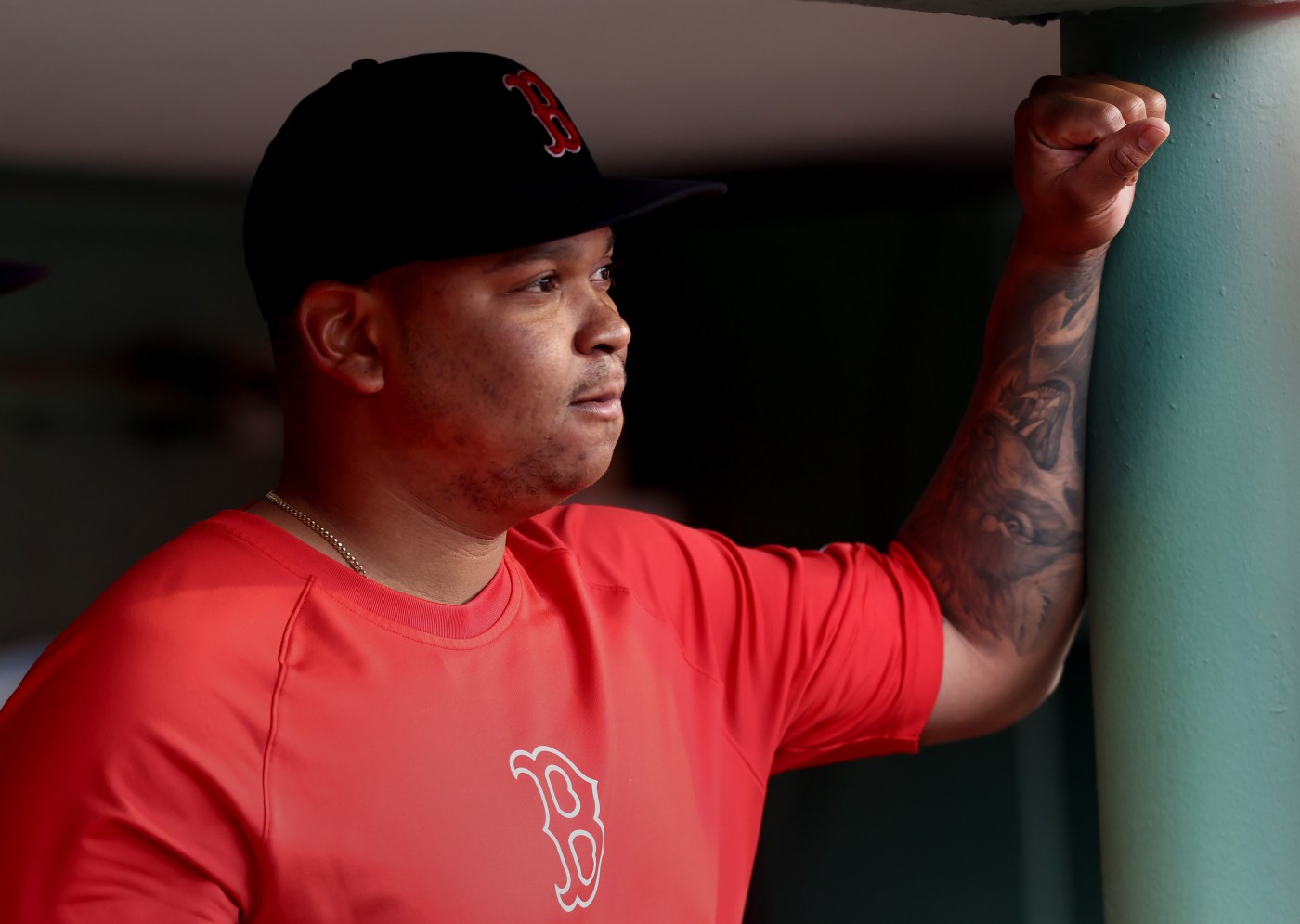
Red Sox Report Card: Rafael Devers’ late struggles pulls down final grade
The Red Sox season is over, and while the club as a whole failed to achieve its goal of reaching the playoffs, numerous players enjoyed individual success.
Time to hand out some year-end grades.
Today we focus on the infielders. For our purposes, Ceddanne Rafaela will be considered an outfielder and graded as part of that group even though he started three more games as an infielder.
Rafael Devers: B
Devers was trending towards a clear “A” until his production fell off a cliff over the final month. On Aug. 25 Devers was batting .290 with 28 home runs, 80 RBI, 33 doubles and a .944 OPS, putting him on pace for one of the best seasons of his career. Then he finished the year batting .169 with only one extra-base hit, three RBI and no home runs over his final 21 games. Injuries obviously played a role, but Devers’ severe slump was a major factor in the Red Sox missing the playoffs. His final numbers all wound up still being quite good, but even Devers acknowledged he could have done a lot better.
Trevor Story: Incomplete
What are we supposed to do with Story? He went down with what was initially thought to be a season-ending shoulder fracture just eight games into the season, and while he did improbably make it back by mid-September, he still only played 26 games. Story made an impact whenever he was on the field, but the sample size is just too small to draw any fair conclusions.
Triston Casas: C
Casas is kind of in a similar boat as Story, but he did ultimately play in about a third of a season’s worth of games, and what we saw over that stretch was a mixed bag. In terms of power, Casas absolutely delivered. The 24-year-old hit 13 home runs with 32 RBI in 63 games, putting him on pace for 33 homers and 82 RBI over a full season, and he also demonstrated improvement defensively at first base. On the other hand, Casas also had a nearly month-long stretch where he just looked lost, and combined with the nearly four months he spent on the IL, the Red Sox really didn’t get the kind of impact from him they needed.
Connor Wong: C+
Normally you don’t expect to get much offensively out of your catcher, but Wong was consistently a contributor and at times Boston’s most reliable right-handed bat. The 28-year-old batted .280 with 13 home runs, 52 RBI and a .758 OPS, and he ranked top five in baseball for batting average, hits (125) and doubles (24) among catchers who appeared in at least 60 games. The Red Sox will take that, but defensively Wong has a lot of work to do. He only threw out 16 of 76 attempted base stealers and FanGraphs had him for minus-14 defensive runs saved, the second lowest total among all catchers and the sixth worst in MLB across all positions.
Danny Jansen: F
Acquired for three prospects at the trade deadline, Jansen didn’t move the needle upon his arrival in Boston. In 30 games with the Red Sox he batted .188 with three home runs, six RBI and a .623 OPS. If the hope was that Jansen could help balance the lineup and give the club more oomph against left-handed pitching, it’s safe to say he didn’t deliver.
Vaughn Grissom: F
Brighter days may lie ahead for Grissom, but it’s hard to imagine his first year in Boston going any worse. Originally envisioned as the new starting second baseman, Grissom got hurt almost immediately after he was acquired and missed all of spring training due to a series of injuries. Once back on the field in May he was a shell of his usual self, and after another stint on the injured list he was ultimately optioned to Triple-A, where he wound up spending most of the rest of his season. To add insult to literal injury, the Red Sox watched as Chris Sale, the guy they traded to get Grissom, finally rediscovered his old form and became the favorite to win the NL Cy Young Award. Grissom did at least finish the season with a strong September, but relative to expectations his 2024 can’t be called anything other than a failure.
Romy Gonzalez: B+
Claimed off waivers from the Chicago White Sox over the winter, Gonzalez wound up proving to be a useful and versatile bench piece for the Red Sox. He played every position defensively beside pitcher and catcher, provided speed and athleticism on the base paths (11 stolen bases) and batted .266 with six home runs, 29 RBI and a .723 OPS. Was he a superstar? No, but Gonzalez thrived in his role, which is exactly what you want from your utility man coming off the bench.
David Hamilton: B
He couldn’t always sustain it, but when Hamilton was on, he was among the most impactful players on the team. Hamilton recorded 33 stolen bases, becoming the 17th player in Red Sox history to record 30 or more steals in a season, and just the third to do so as a rookie. He also had a dominant two-month stretch from mid-May to the All-Star break in which he batted .287, posted a .773 OPS, tallied 15 extra-base hits and stole 20 bases, a stretch that saw Boston rise from .500 to 10 games over and in playoff position. Outside of that stretch he didn’t contribute nearly as much, but all told it was still a big step forward. Now Hamilton just needs to prove he can maintain that production over an extended period.
Enmanuel Valdez: C-
On the surface Valdez’s numbers this season weren’t very good. He batted .214 with six home runs and a .633 OPS over 201 at bats, and his -0.6 wins above replacement was the lowest on the team by a position player who finished the year on the 40-man roster. Valdez did provide value in one specific context, however, which was as a pinch hitter. In that role he went 4 for 10 with two doubles, five RBI, a walk and a 1.017 OPS.


